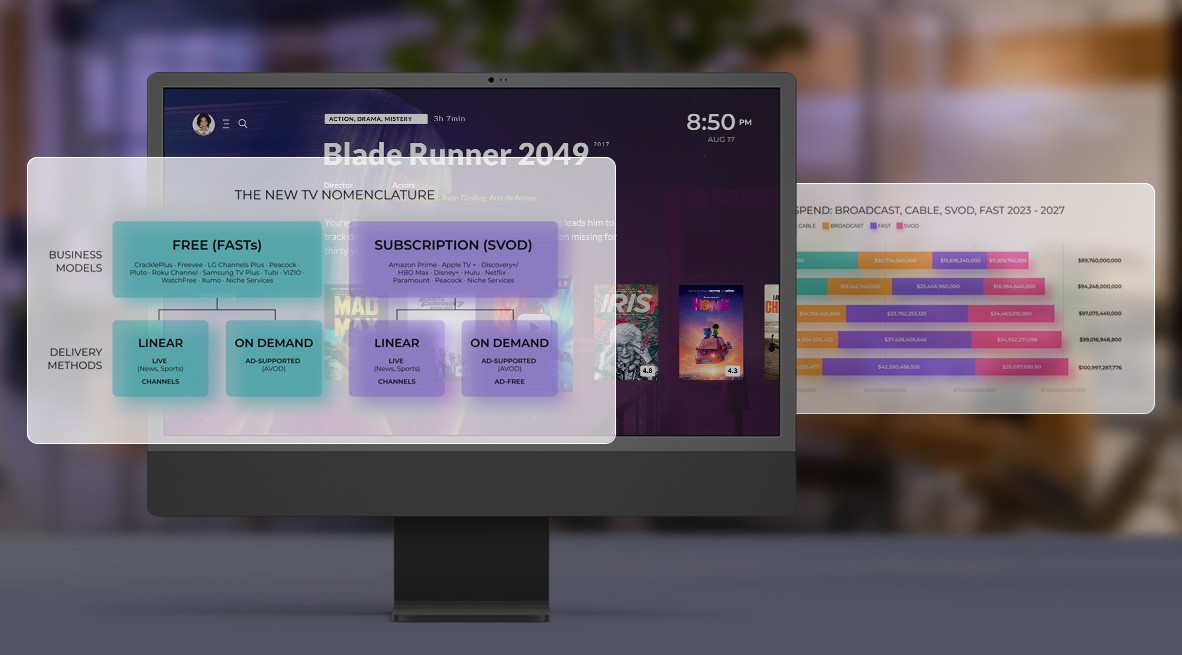The rapid growth and success of global distribution services and lightning-fast shifts in video industry trends come with a downside — and advertisers are the ones feeling the hit first of all.
When some of them succumb to faulty beliefs about the ways viewers engage with content, they greatly undermine TV and video advertising reach, wave goodbye to profits, and in the worst scenarios, even set TV advertising campaigns up for failure.
Can Oxagile just let things stay that way? We believe in making smart data-driven choices and supporting others in doing the same, so the answer is a resounding no. And when Comcast, a major telecommunications and media corporation, took a deep dive into understanding the behaviors of TV and streaming service users in their study, we couldn’t resist jumping into the mix.
In this article, we’re set to share the key insights from their report, alongside our own firsthand AdTech experience, to clear up any myths that don’t let advertisers create ad tactics that precisely resonate in the dynamic landscape of 2024.
Myth #1
Viewers are becoming mobile and ditching their big TV screens
Reality check
82% of streaming viewing in the US unfolds on good old TV.
And although in Europe, unlike in the US, the big screen accounts for 56% of ad views by device, it still turns out that while mobile phones are convenient to watch something under the covers or to avoid small talk during your lunch at work, relaxing on the sofa after a tiring day, sparing oneself the effort of holding anything in hand is just too tempting to resist.
A winning strategy
“Engage with the audience on the biggest display within the household, because the unaided recall will be 2.2 times higher, and the intention to buy will be 1.3 times greater than when the same advertisement is shown on a mobile. ”
Myth #2
FAST is a non-premium option like AVOD
Reality check
FAST is a familiar format for those accustomed to conventional TV, all while offering the same impressive range of content options as AVOD. So it’s no surprise that surveys reveal users view FAST as a premium video experience, just like AVOD.
After all, the perk of effortlessly enjoying an uninterrupted flow of content, minus the frustration of making the choice and searching for something to watch, makes enduring occasional commercial breaks truly worthwhile.
A winning strategy
“Promote the services or products through high-quality, expertly crafted videos, because they usually stick in viewers’ minds 58% better compared to simple videos made by users.”
All nuances of FAST uncovered
Explore our article to discover the array of benefits it brings, gain insights into the current challenges advertisers are facing, and unlock original strategies to address these issues.

Myth #3
Linear television has almost outlived its era
Reality check
People are still dedicating close to 6 hours a day to the ritual of watching traditional TV.
Most likely, it’s all about that convenience factor — the ability to sit down, surf the channels, and stumble upon something intriguing. And considering that the majority of modern TV watching consists of live content, it’s safe to say there’s no match for the joy of turning to your sporting event viewing companion and exclaiming, “Hey, did you see that?”.
A winning strategy
“Spend about 20-30% of your premium video budget for ads within streaming content and allocate the rest of the funds towards traditional TV.”
Myth #4
Ads generate the highest profits during prime time
Reality check
Research suggests that the majority of viewing (72 percent) happens outside the popular “prime-time” period (typically from 8 PM to 11 PM), encompassing multiple TV networks. More individuals are opting to watch content after these peak hours, making strategies like dayparting or rotations nearly insignificant.
And while it could seem a bit bittersweet that viewers are embracing their inner rebels and watching TV whenever they want, this shift might actually play into the hands of advertisers. Given that advertising costs can differ from one time slot to another by up to ten times, there’s no longer need to worry if you’re not always hitting the “prime-time jackpot”.
A winning strategy
“Distribute the budget across different months, networks, and times of day.”
Myth #5
Ad breaks take their sweet time on linear TV, unlike the ones on streaming
Reality check
According to data, those ad pods that last more than 3 minutes — the amount of time enough for us to forget what movie we were even watching — make up 34 percent of all ad pods on streaming services. And that’s about the same amount of time that ad pods take up on regular TV.
So no matter what content consumption option users choose, don’t be afraid of overwhelming them with ads. They’ve surely developed enough patience, given that they simply don’t have much of a choice.
A winning strategy
“Allocate 70% of impressions to broad, data-driven TV and streaming, while designating the rest 30% to highly targeted, addressable strategies.”
Wrapping up
Beyond these common misconceptions, there’s one remarkably widespread trend that’s surprisingly true: users are becoming accustomed to personalized advertisements, and advertisers must embrace this regardless of the channels they use — whether it’s streaming platforms, OTT solutions, or linear TV.
If you’re curious to learn more about the ways to effortlessly make every advertisement user-centric or would like to delve deeper into safeguarding yourself from choosing the wrong advertising strategy, Oxagile would be happy to share with you the know-how on achieving this using real-life examples from our recent successful AdTech projects.
























